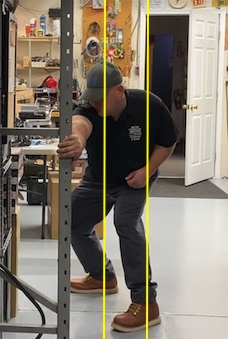jupiterboy
Eagle Member
- Joined
- May 6, 2021
- Messages
- 999
No need to apologize - I actually did that because I tend to junk mine up when I have a flight of ideas and am trying to get better lol.
Apology back at ya - totally didn't mean to indict you or project about standstills, I know it could come across that way, sorry if it didMore just wanted to add some motivation to stick w/ it when you're triaging stuff.
The Figure 8 hip motion seems freaking strange and magical if you haven't learned it elsewhere. Just buttwiping against the wall only got me so far, and you can kinda cheat some of the motions without shifting weight, or using the legs a little bit wrong, etc. It's all connected - and as my body keeps learning to move better it feels more and more natural. But then I learn I'm still wrong and need to make a major correction (and be willing to shake it up to learn).
Door frame grab height: as you can see, I'm learning it now so take it with a grain of salt & I will always take in what I hear from others. Though this part might help:
What I think I'm learning from the cables and door frame today is that when you initially grab the frame, it generally should be a bit lower relative to your shoulder like SW22 talks about in Door Frame 2. Then when you settle into your stance to load tension against it, it's interesting that the power position of the arm ends up roughly perpendicular to the ground because you want to "throw the doorframe" roughly parallel to the ground. But the stance needs to set up the tilted axis to unwind effortlessly - that's what you see me struggling against in my tipping or tilting habits & the cable pull seemed to challenge my body habits.
Figure 8 - I might know what you mean but video will help. Might get one of you doing doorframe and doing Buttwipe drill against the wall to help triage some of the lower body action.
Yeah, these were some of the first form vids I watched. My take away was skewed to lower is better. That's not right. He's saying don't be too high, which is different. I can get down pretty low and get slightly more force, then past a point it diminishes. I don't need to be that low and I don't need that thought. That's a great thought for me to let go of as it was pushing my strides longer than they needed. The other negative that I've debunked of late is that the drive leg is not driving but is actually collapsing once it is done. I think that's what people call the drop, IDK. That's my throw thought of the moment—quickness in the the collapse of drive leg.
